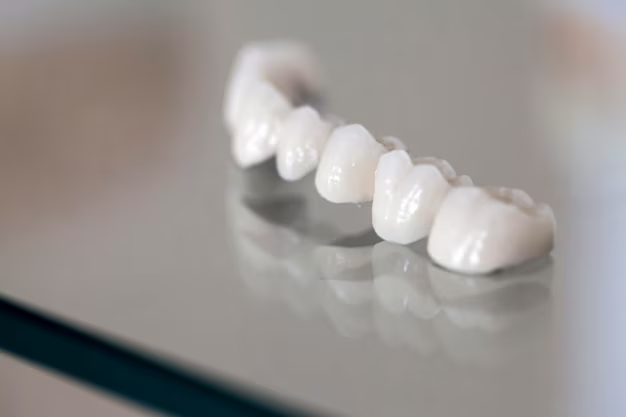Understanding Dental Bridges: What You Need to Know
Dental health is an integral part of overall well-being, and for many, it can directly influence their self-esteem and lifestyle. Among the most significant dental restorations available today is the dental bridge—a solution that helps restore the aesthetics and function of one's smile. But what exactly is a bridge on teeth, and how does it impact oral health? Let’s delve into this topic comprehensively, exploring its types, benefits, processes, and considerations.
🦷 What Are Dental Bridges?
A dental bridge is a fixed dental prosthetic that replaces one or more missing teeth by literally "bridging" the gap. It typically consists of one or more artificial teeth (pontics) that are anchored in place using crowns cemented onto adjacent healthy teeth or dental implants.
Types of Dental Bridges
Dental bridges come in several variations, tailored to meet individual needs. Here’s a closer look:
Traditional Bridges: These are the most common type, featuring a pontic fixed between two crowns. The crowns are cemented onto the teeth adjacent to the missing tooth or teeth.
Cantilever Bridges: Used when there are teeth on only one side of the gap, these bridges are generally less stable than traditional bridges.
Maryland Bridges (Resin-bonded): These are more conservative alternatives involving metal or porcelain wings bonded to the backs of the teeth on either side of the gap.
Implant-Supported Bridges: These are anchored by dental implants instead of natural teeth, making them secure and durable.
Purpose and Benefits
Dental bridges serve various purposes in enhancing both dental health and daily life. Here are some core benefits:
- Restoration of Function: By filling gaps, bridges enable proper chewing and speaking.
- Aesthetic Improvement: They restore a natural look, improving one’s smile and confidence.
- Maintaining Facial Structure: Bridges prevent remaining teeth from shifting, thus preserving facial aesthetics.
- Long-lasting Solution: When maintained properly, bridges offer a durable solution for missing teeth.
🔍 How Does the Process Work?
Getting a dental bridge is a multi-step process that involves planning, preparation, and final placement, typically requiring multiple dental visits.
Initial Consultation and Assessment
The journey begins with a dental assessment:
- Examination: Here, the dentist evaluates the overall oral health, discusses the suitability of bridges, and explores alternative options.
- X-rays and Impressions: These help in assessing the integrity of surrounding teeth and gums and in creating an accurate model for the bridge.
Tooth Preparation
During this stage:
- Shaping: The abutment teeth (those adjacent to the gap) are prepared by removing a portion of enamel to accommodate crowns.
- Temporary Bridge: To protect prepared teeth and maintain appearance, a temporary bridge is placed.
Crafting and Fitting the Bridge
Following preparation:
- Bridge Creation: Using impressions, a dental lab crafts a personalized bridge.
- Fitting and Adjustments: The dentist checks and adjusts the bridge for optimal comfort and fit.
Final Placement
- Cementing: Once the fit is confirmed, the permanent bridge is cemented onto abutment teeth or implants.
🏆 Key Considerations Before Opting for a Dental Bridge
Choosing to have a dental bridge involves multiple factors. Here are some considerations to keep in mind:
Oral Health
Healthy teeth and gums are prerequisites for bridge placement. For individuals with significant decay or gum disease, treatments to improve oral health may be necessary prior to bridge placement.
Costs and Insurance
Dental bridge costs can vary depending on materials and complexity. Always discuss with your dental office regarding estimates and insurance coverage options.
Longevity and Maintenance
The longevity of dental bridges largely depends on good oral hygiene. Regular brushing, flossing, and dental check-ups are essential to prevent problems such as decay or gum disease.
🤔 Bridges vs. Other Prosthetics
When considering dental prosthetics, it’s useful to weigh dental bridges against other options like dentures and implants.
Comparison to Dentures
- Stability: Bridges are fixed and more stable compared to removable dentures.
- Comfort: Many find bridges more comfortable and natural-feeling.
- Maintenance: Bridges require specific cleaning techniques, while dentures may need special care solutions.
Comparison to Implants
- Invasiveness: Implants involve surgery, whereas bridges usually do not.
- Bone Density: Suitable for patients without adequate bone for implants.
- Cost: Bridges might be more affordable, though this varies by case.
🛠️ Practical Tips for Dental Bridge Care
Ensuring the durability and effectiveness of your dental bridge involves consistent care:
- Brush Twice Daily: Use a soft-bristle toothbrush and non-abrasive fluoride toothpaste.
- Floss Daily: Special flossers or interdental cleaners can help clean under the bridge effectively.
- Routine Check-Ups: Frequent visits to your dentist facilitate early detection and management of potential issues.
Quick Tips and Takeaways:
- 🚰 Stay Hydrated: Drink plenty of water to help maintain oral moisture and wash away residuals.
- 🍎 Balanced Diet: Consume a diet rich in vitamins and minerals to support oral health.
- 🛡️ Protective Measures: If grinding teeth at night, consider a mouthguard to protect your bridge.
- 🚫 Avoid Hard Foods: Reduce risk of bridge damage by avoiding overly hard or sticky foods.
Dental bridges are a common and effective solution for replacing missing teeth, enhancing both functionality and aesthetics. By understanding the various types, processes involved, and maintenance requirements, one can make informed decisions and contribute to the longevity of the prosthetic. Through proper care, a dental bridge can significantly enhance one's quality of life, enabling a confident smile and improving overall oral health.

Related Topics
- a Bridge For Teeth
- a Denture Plan That You Can Pay Monthly Payments
- Are Dentures Covered By Insurance
- Are Dentures Covered By Medicare
- Are Dentures Uncomfortable
- Are Permanent Dentures Thinner Than Temporary Dentures
- Are Snap-in Dentures Covered By Insurance
- Are There Plastic Dental Partials With Metal
- Can a Tooth Be Added To a Valplast Denture
- Can Dogs Get Dentures